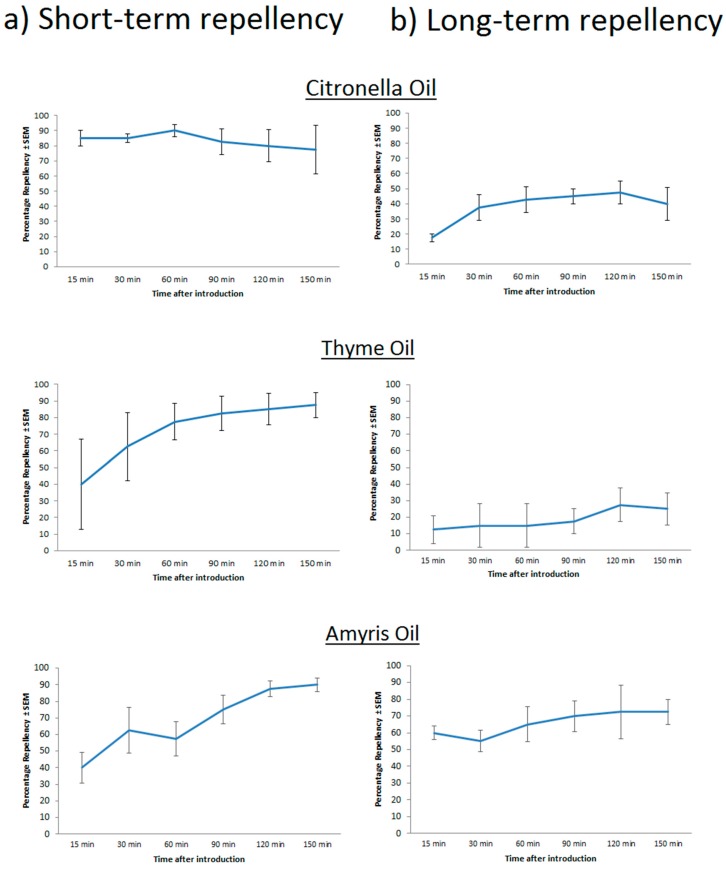Figure 2.
The relative spatial repellency of various plant essential oils at points immediately after treating a surface and after a five hour waiting period. Adult mosquitoes are placed in a closed 2-ft × 90-mm diameter cylinder, with one side containing a filter paper treated with the plant essential oil of interest. Relative mosquito abundance on both sides is quantified throughout the experimental interval to calculate percentage repellency. (a) Corresponds to the repellency caused by the plant essential oils if mosquitoes are immediately exposed to the filter paper after treatment and (b) corresponds to the repellency caused by various plant essential oils if mosquitoes are exposed to the treated filter paper after it is allowed to dry for 5 h. Oils that are predominantly composed of monoterpenoids (citronella and thyme oil) cause rapid, high levels of repellency in the short-term assay, with relatively lower values of repellency in the long-term assay. Oils that are composed primarily of repellent sesquiterpenoids cause lower immediate repellency, but maintain a higher level of repellency in the long-term assay (amyris oil).

